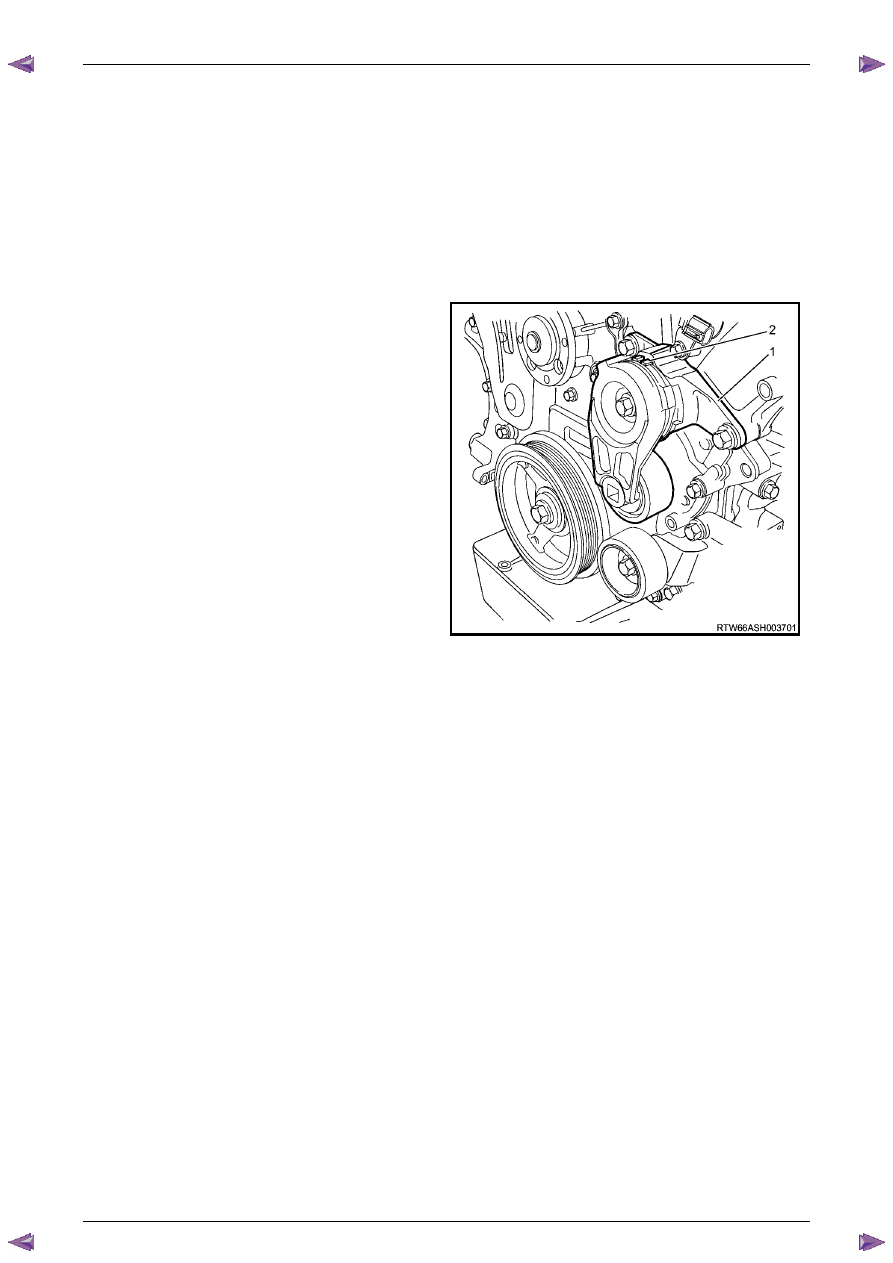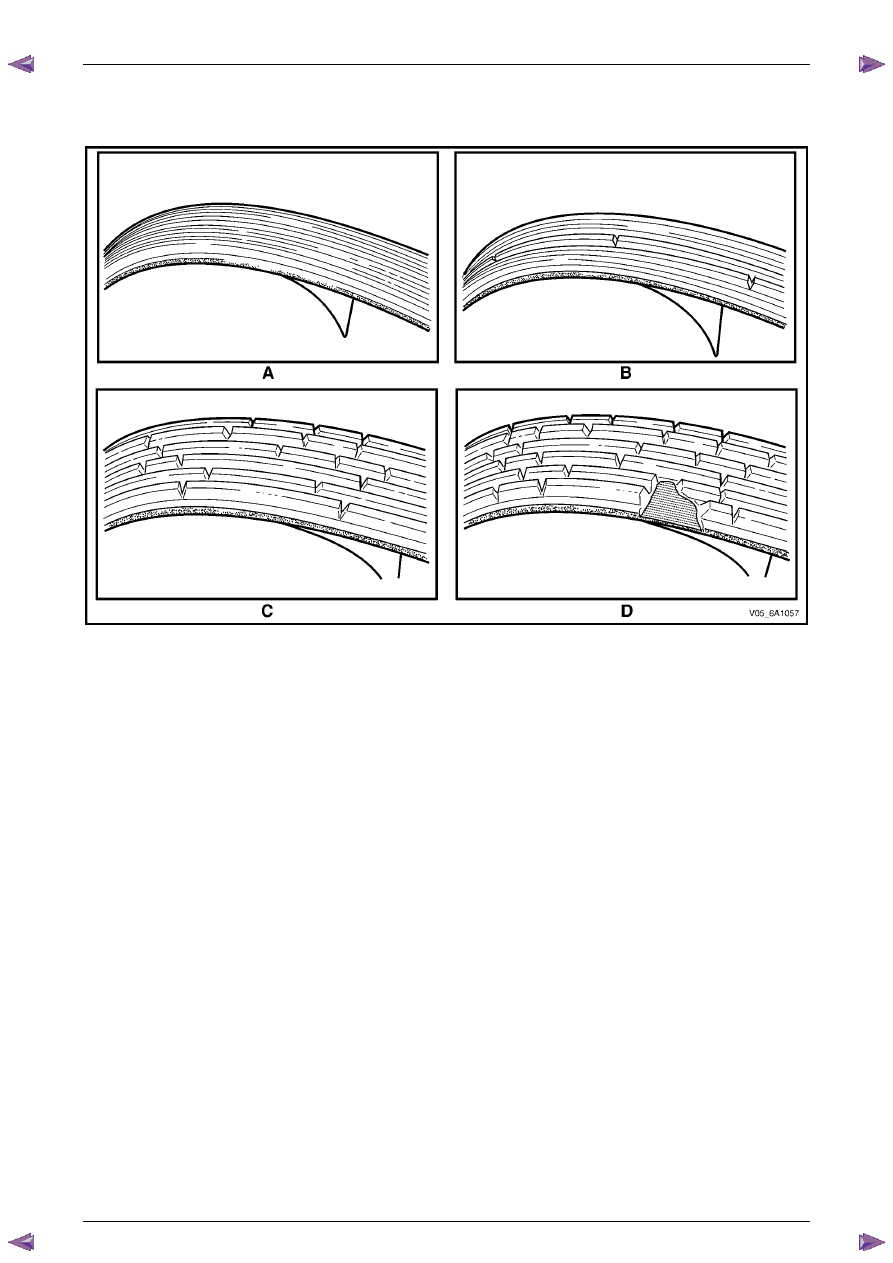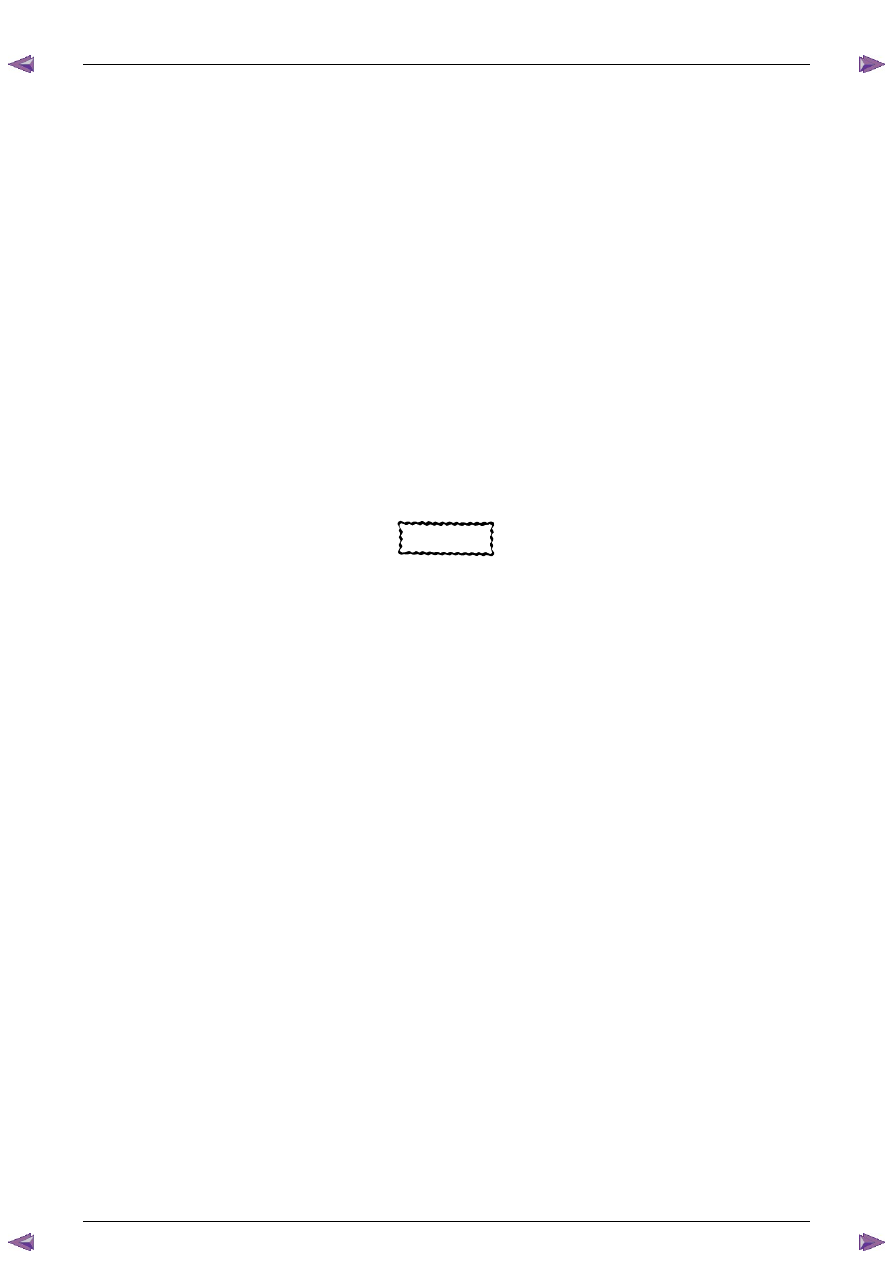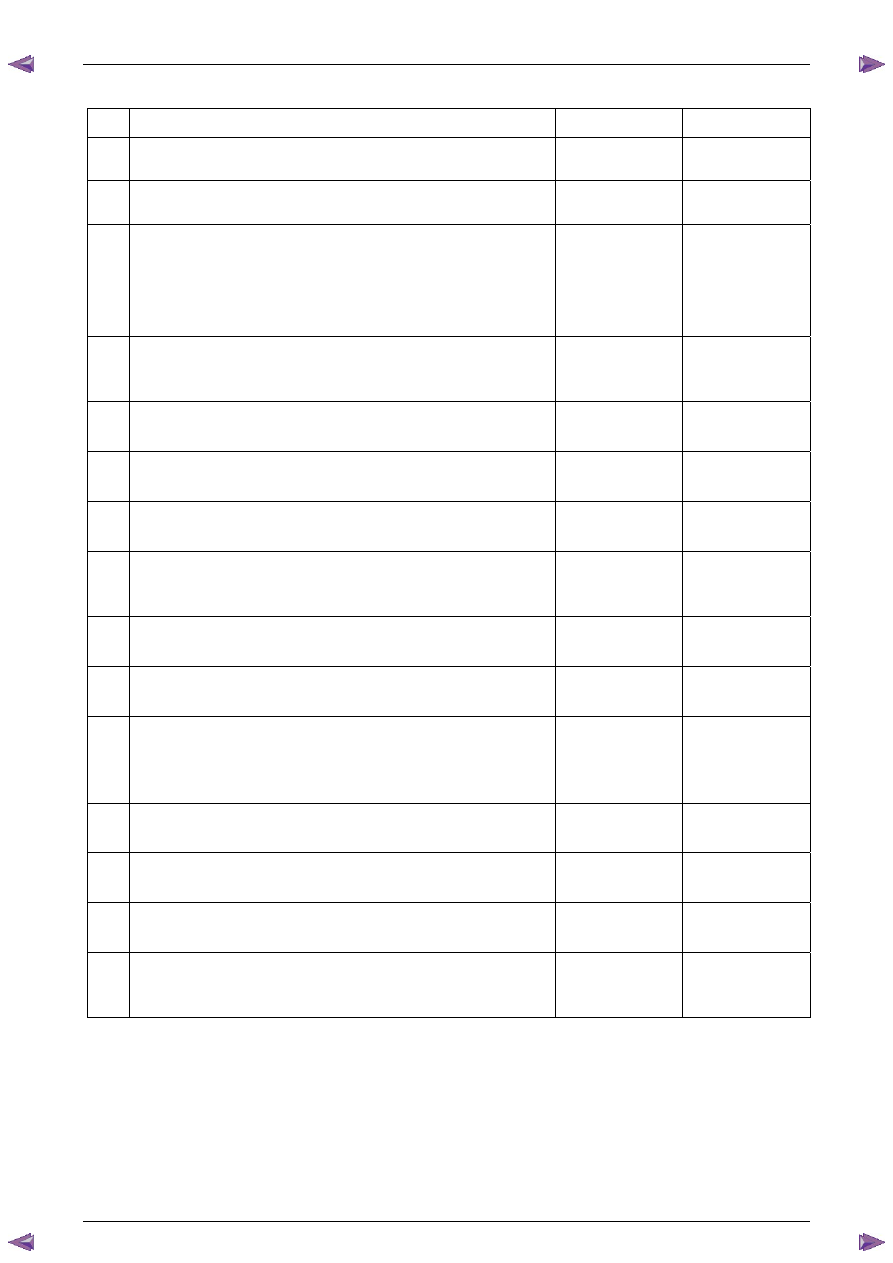Isuzu KB P190. Manual — part 707

Engine Mechanical – V6
Page 6A1–51
Page 6A1–51
2.20 Accessory Drive Belt Diagnosis
Tension Check
N O T E
An accessory drive belt that squeaks when the
engine is started or stopped is considered normal
and has no effect on drive belt durability.
1
Start the engine and switch off the air-conditioning system. Allow engine to run until normal operating temperature
has been reached.
2
Turn the engine off and inspect the markings on the
drive belt tensioner to confirm the drive belt tension is
within the operating limits.
3
If the markings on the drive belt tensioner were
outside the acceptable operating limits, replace the
accessory drive belt, refer to
3.5 Accessory Drive
Belt
.
N O T E
The operating limits for acceptable drive belt
tension are when the drive belt tensioner pointer
(1) is aligned between the outer edge of the
minimum and maximum tension marks (2).
Figure 6A1 – 21

Engine Mechanical – V6
Page 6A1–52
Page 6A1–52
Inspect
Figure 6A1 – 22 illustrates the various stages of belt wear to aid in belt replacement decisions. Condition of the belt ribs
is best judged where the belt is bent over one of the larger accessory drive system pulleys.
Figure 6A1 – 22
Legend
A New
belt
B
Moderately used belt – few cracks, some wear on ribs and in
grooves. replacement is not required
C
Severely used belt – several cracks per 30 mm. Should be
replaced before chunking occurs.
D
Failed belt – separation of rib material from the backing
(chunking). Replace belt immediately.

Engine Mechanical – V6
Page 6A1–53
Page 6A1–53
Drive Belt Chirp
Definition
Accessory drive belt chirping can be defined as a high-pitched noise that is heard once per revolution of the drive belt or
a pulley.
N O T E
Chirping during start-up in cold damp conditions
that abates once the engine reaches operating
temperature is considered normal.
Diagnostic Aids
The symptom may be intermittent due to moisture on the drive belts or pulleys. It may be necessary to spray a small
amount of water on the drive belt to duplicate and confirm a customers concern. If spraying water onto the drive belt
system duplicates the symptom, cleaning the belt pulleys may be the solution.
A loose or incorrectly installed body component, suspension component or other item may be the cause of the noise.
Test Description
The numbers below refer to steps in the diagnostic table.
2
The noise may not be engine related. This step is to confirm the engine is making the noise. If the engine is not
making the noise, do not proceed further with this diagnostic procedure.
3
The noise may be an internal engine noise. Removing the drive belt and operating the engine briefly will confirm
whether or not the noise is related to the drive belt.
CAUTION
When running the engine with the accessory
drive belt removed, the coolant pump will not
be operating and the engine may overheat if
left unsupervised even for a short period.
N O T E
There may also be a number of DTCs set when
running the engine with the accessory drive belt
removed.
4
Inspect all drive pump pulleys for pilling.
N O T E
Pilling is the small balls (pills) or strings of rubber
in the belt grooves caused by the accumulation of
rubber dust.
6
Misalignment of the accessory drive system pulleys may be caused by incorrect mounting of an accessory drive
component (A/C compressor, generator etc.) or pulley. Misalignment may also be caused by incorrect installation of
a pulley during a previous repair. Test for a misaligned pulley using a straight edge in the pulley grooves across
two or three pulleys. If a misaligned pulley is found, refer to the relevant component service information for the
correct installation and removal procedures.
10
Inspecting the fasteners can eliminate the possibility that an incorrect fastener has been installed.
12
Inspecting the pulleys for being bent should include inspecting for a dent or other damage that would prevent the
drive belt from not seating correctly in all of the pulley grooves or on the smooth surface when the back end of the
belt is used as the driving surface.
14
Replacing the drive belt when it is not damaged and there is no excessive pilling will only be a temporary repair.

Engine Mechanical – V6
Page 6A1–54
Page 6A1–54
Diagnostic Table
Step Action
Yes
No
1
Did you review the information provided in 2.2 Symptoms, and
perform the required inspections.
Go to Step 2
Go to
2.2 Symptoms
2
Confirm the customer complaint. Is there a chirping noise?
Go to Step 3
Refer to Diagnostic
Aids in this Section
3
1
Remove the drive belt, refer to 3.5 Accessory Drive Belt.
2
Operate the engine for no more than 40 seconds.
Does the chirping noise still exist?
Accessory drive
system OK.
Go to 2.2
Symptoms, and
restart the diagnosis
of the noise
Go to Step 4
4
Inspect for severe pilling, i.e. in excess of 33% of the belt groove
depth.
Do the belt grooves have pilling?
Go to Step 5
Go to Step 6
5
Clean the drive belt pulleys with a wire brush.
Are the belt pulleys clean?
Go to Step 15
Go to Step 6
6
Inspect for misalignment of the pulleys.
Are the pulleys misaligned?
Go to Step 7
Go to Step 8
7
Replace or repair misaligned pulleys.
Did you complete the repair?
Go to Step 15
—
8
Inspect for any bent or damaged accessory drive component
mounting brackets.
Did you find any bent or damaged brackets?
Go to Step 9
Go to Step 10
9
Replace or repair any bent or damaged Brackets.
Did you complete the repairs?
Go to Step 15
—
10 Inspect for missing, loose or incorrect fasteners.
Did you find any missing, loose or incorrect fasteners?
Go to Step 11
Go to Step 12
11 Tighten any loose fasteners to the torque specification as provided in
provided in 6. Torque Wrench Specifications.
Replace any incorrect or missing fasteners.
Did you complete the repairs?
Go to Step 15
—
12 Inspect for a bent pulley.
Did you find any bent pulleys?
Go to Step 13
Go to Step 14
13 Replace bent pulleys as required.
Did you complete the repair?
Go to Step 15
—
14 Replace the accessory drive belt, refer to 3.5 Accessory Drive Belt.
Did you complete the repair?
Go to Step 15
—
15 Reinstall the accessory drive belt and operate the system to confirm
the repair.
Did you correct the chirp noise?
Accessory drive
system OK
Go to 2.2
Symptoms, and
restart the diagnosis

Нет комментариевНе стесняйтесь поделиться с нами вашим ценным мнением.
Текст